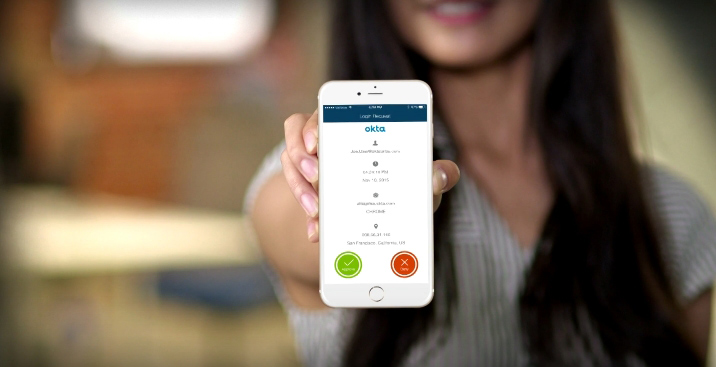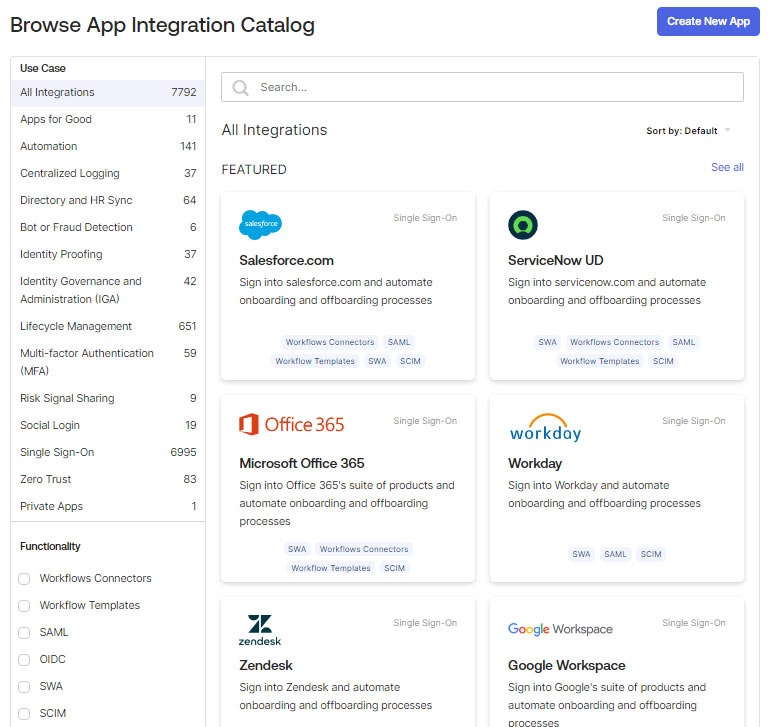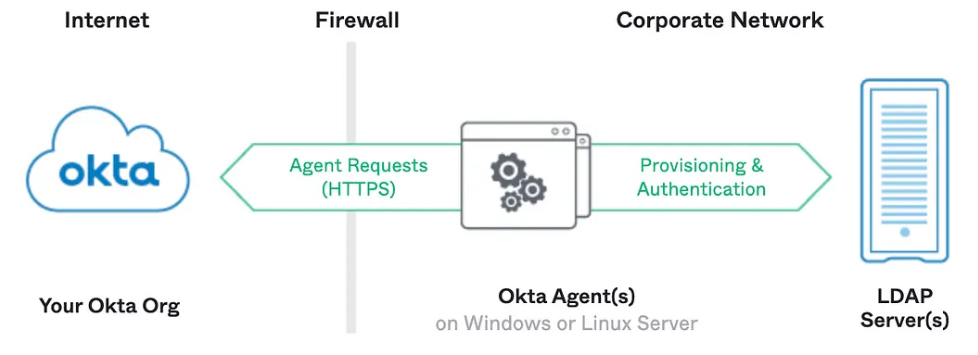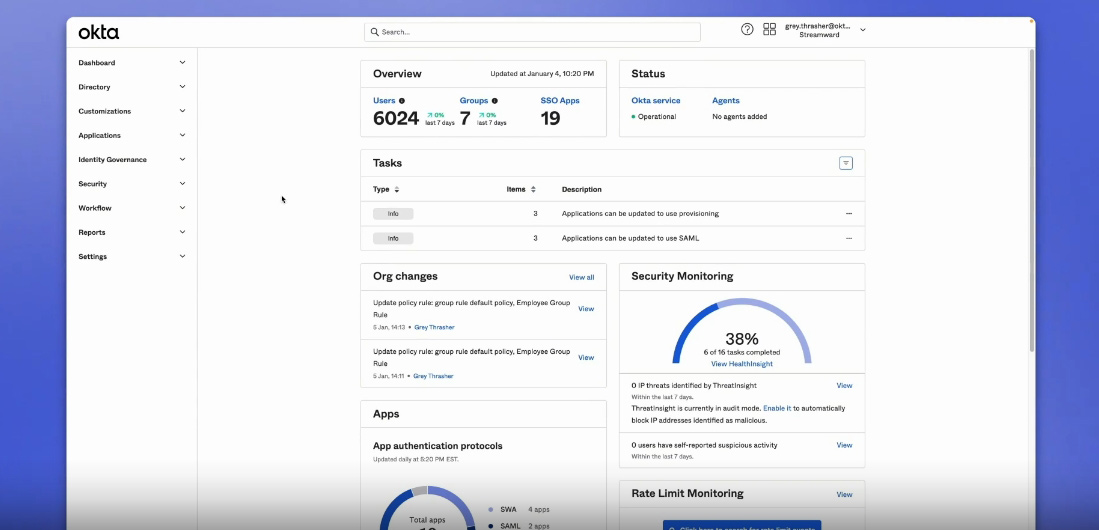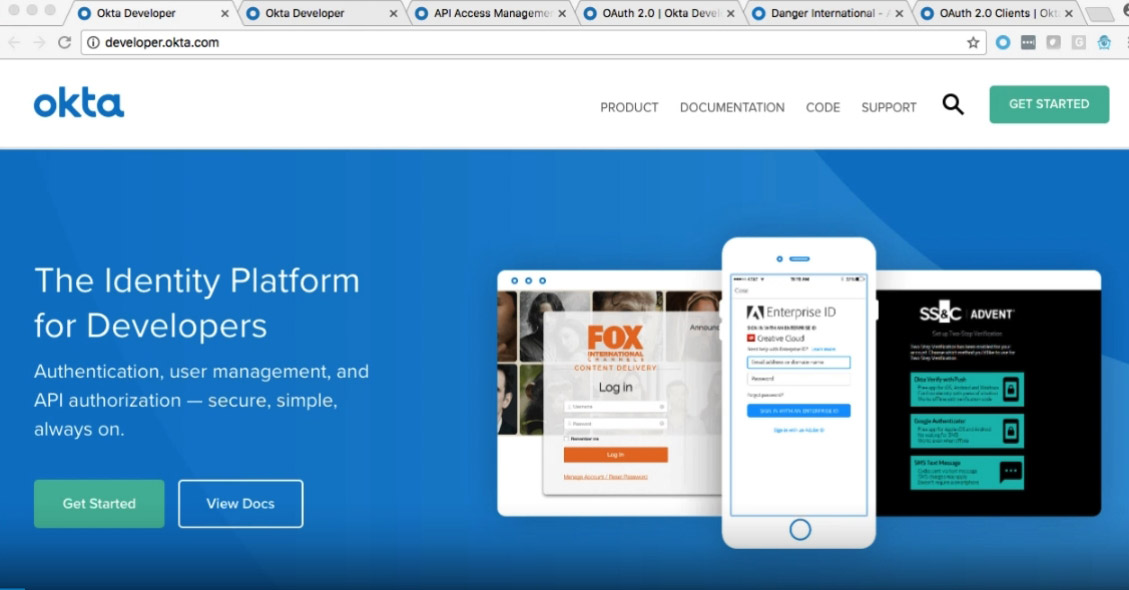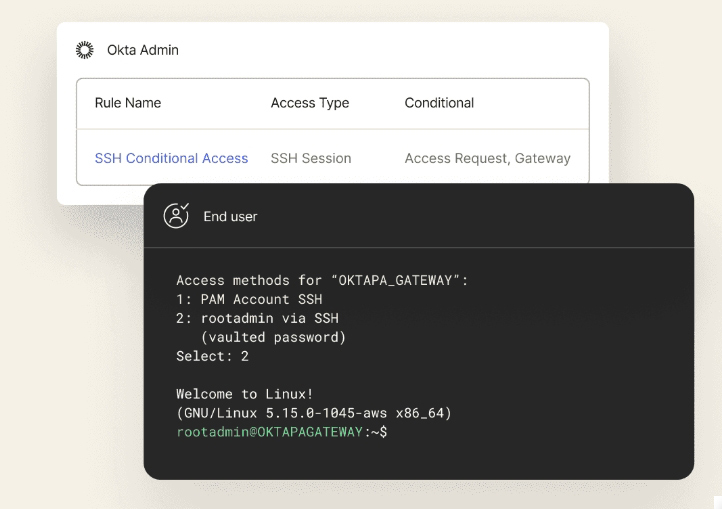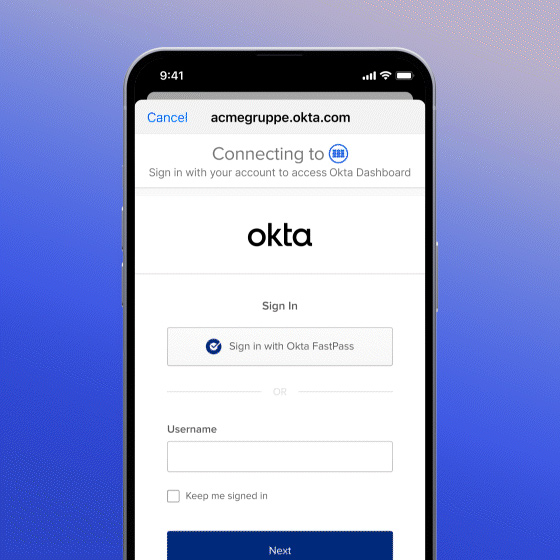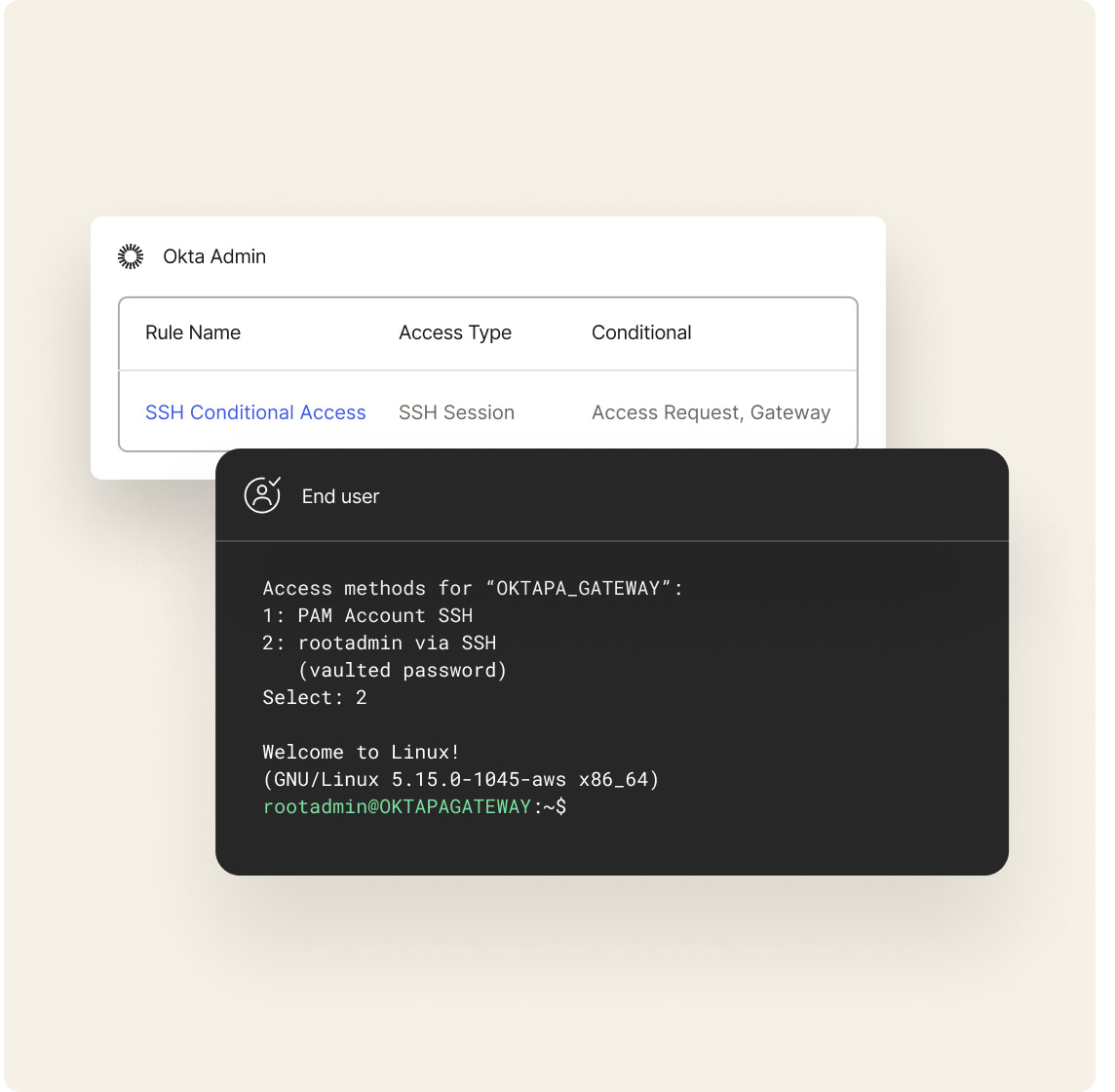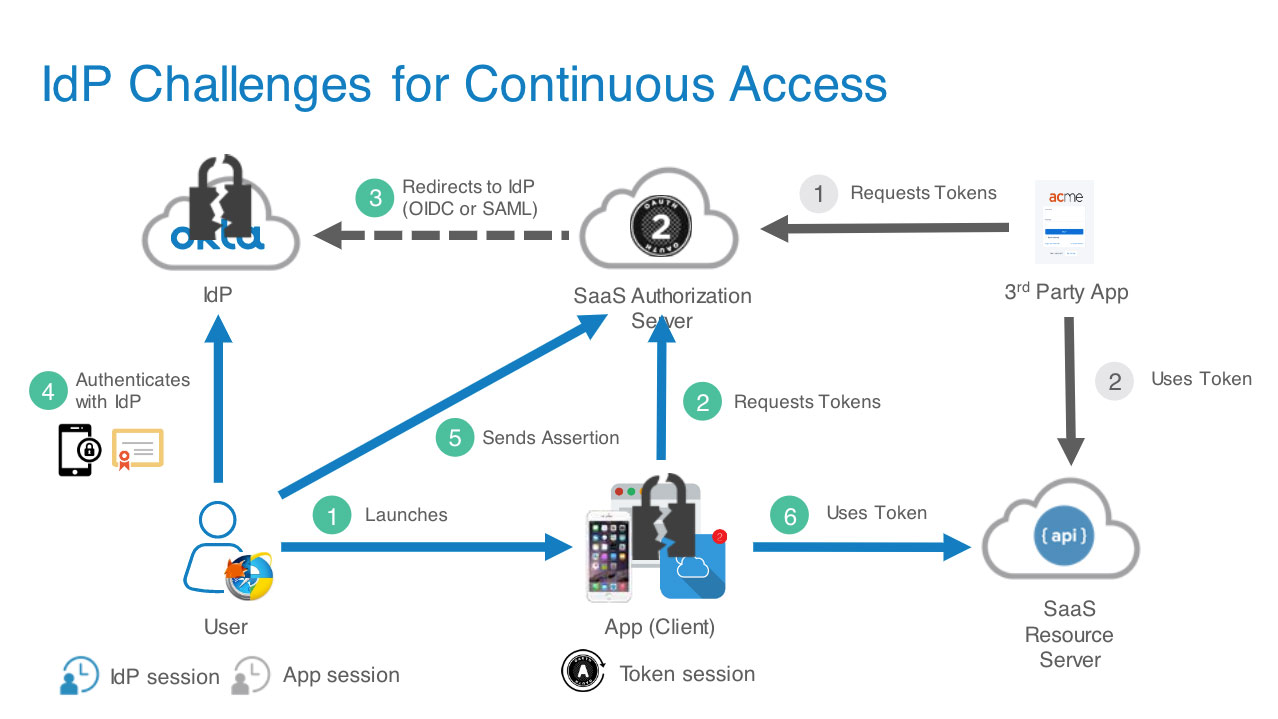Explore Okta's Self-Guided Tours
Okta and Carahsoft have partnered together to provide a series of self-guided tours of Okta's products and features. Similar to a live demo, the self-guided tours explores how Okta's products and features applies to a specific technology vertical such as Zero Trust, Cybersecurity and Law Enforcement Technology.
Learn about Okta's benefits, watch a short pre-recorded demo video, and download related resources. If interested in furthering the conversation, you can also schedule a live demo with a Okta expert from Carahsoft. Start a Self-Guided Tour now by selecting one below:
Okta helps Law Enforcement agencies and Police Departments meet Criminal Justice Information Services (CJIS) requirements by providing strong access control, advanced authentication and logging. Agencies can streamline IT operations through the secure management of apps and multi-cloud environments in a single identity platform.
Okta is the world’s leading identity solution with a powerful and extensible platform that is easy-to-use and integrates with existing solutions. Okta complies with multiple regulatory standards, including SOC2, ISO 27001 and 27018 and has a FedRAMP Moderate Authority to Operate (ATO).
Want to learn more about Okta?
Start a self-guided demo now to learn how to use Okta with CJIS.
Okta’s Benefits Snapshot:
- Automate processes with little to no-code options
- Get a central admin console to manage all users, apps and policies
- Accelerate operations with Zero Trust solutions
In today’s ever-evolving threat landscape, traditional security perimeters are no longer sufficient to safeguard Government assets. To address this challenge, Okta offers robust support for Zero Trust architecture, empowering agencies to fortify their security posture against sophisticated threats. With Zero Trust being a collaborative endeavor, Okta emphasizes the importance of unified efforts through its Integration Network, providing pre-built, deep integrations that enable technologies to work seamlessly together. By seamlessly integrating identity solutions across diverse technology ecosystems and partnering with industry-leading security providers, Okta enables agencies to adopt a holistic approach to Zero Trust.
Want to learn more about Okta?
Start a self-guided demo now to learn more about Okta’s comprehensive cybersecurity solutions.
Okta's Benefits Snapshot:
- Applications: Single Sign-On (SSO) into 7,000+ and provision users to over 250 cloud and on-prem apps.
- Infrastructure as a service: Connect IT and developers to public cloud computing services securely.
- Zero Trust Strategy: Integrate your identity solution across your entire technology ecosystem seamlessly.
Okta is a trusted leader in identity and access management (IAM), specializing in empowering agencies to build robust Zero Trust networks. In the era of cloud adoption and remote work, Okta plays a crucial role in securely enabling user access regardless of location, device or network. With a comprehensive suite of solutions, Okta serves as an essential foundation for implementing Zero Trust architectures by effectively managing identity and access controls. Okta’s Adaptive Multi-Factor Authentication (Adaptive MFA) exemplifies its contextual approach to security, leveraging device, location and network insights to assess login risks and prompt appropriate authentication measures, enhancing overall authentication security and supporting passwordless login experiences.
Okta’s Integration Network boasts over 6,000 out-of-the-box integrations, facilitating deep connections across all components of a Zero Trust ecosystem, including cloud security gateways, data security, network security, device security and workload security. Okta’s Centralized Reporting provides granular visibility through real-time system logs, geolocation tracking, application access reports and SIEM integration, empowering agencies to maintain robust security postures in dynamic environments.
Want to learn more about Okta?
Start a self-guided demo now to learn more about Okta’s innovative Zero Trust solutions.
Okta's Benefits Snapshot:
- Cloud and Mobile Security: Securely embrace cloud and mobile technologies by moving away from perimeter-focused security approaches, ensuring access for all users regardless of location or device.
- Comprehensive Access Controls: Extend access controls beyond applications to encompass Windows and Linux servers as well as APIs, ensuring that only authorized individuals have access to resources at the appropriate times.
- Unified Access Management: Manage access across cloud and on-premises applications for employees, partners and contractors, ensuring precise resource allocation based on user needs and roles.




